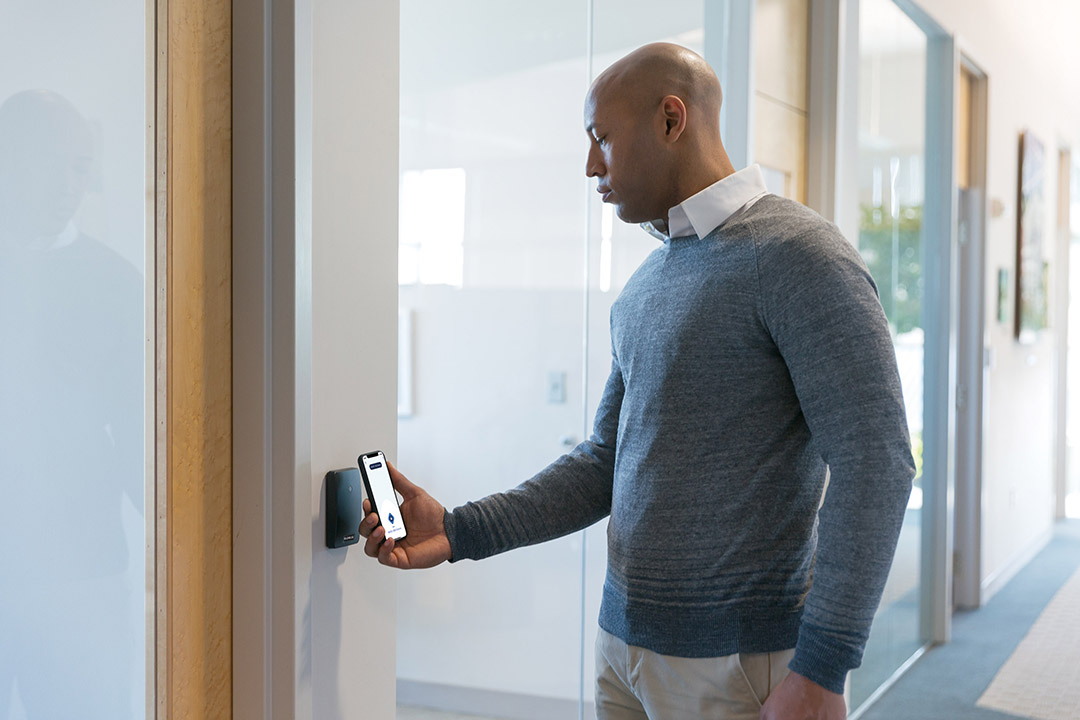By: Chris Skinner, Director of Security Technologies
As I’ve discussed before, credential-based access control is a quickly evolving landscape that demands the attention of anyone who prioritizes the physical safety of their business. Criminals have become increasingly efficient at finding and exploiting vulnerabilities in access control systems. Fortunately, the security industry has remained ahead of the curve, and more secure forms of credential-based access control are already commercially available.
Adoption of these new technologies, however, has lagged behind, as business owners continue to lean on the systems they are already familiar with. This, I would argue, is why Bluetooth credentials represent such a crucial step forward. They combine the best of both worlds, offering encryption and greater security, as well as user-friendliness and relative cost-effectiveness. Following so far? Let’s break it down a bit more.
The Trouble with Traditional Access Control
If you pay attention to the state of the security industry, you have doubtlessly witnessed a surge in breaches within traditional card-based access control systems. Prox cards, the decades-long industry standard, have taken a beating in recent years, as it has become common knowledge how easy they are to clone. Devices like the Flipper Zero, designed for penetration testing, have further highlighted the vulnerabilities in card-based systems, making them a cause for concern among security professionals. All in all, the current evidence supports a clear conclusion: if you’re still relying on legacy card readers and unencrypted credentials, you’re putting your business at risk.

Riding the Wave of Digital Wallet Adoption
However, amidst these challenges, a beacon of hope has emerged in the form of Bluetooth credentials. Since 85% of Americans (and 95% between the ages of 18-49) are smartphone users, it should go without saying that the use of these devices for carrying out everyday tasks is increasingly commonplace.
With that in mind, given the increasing comfort level among the general population in using digital wallets such as Apple Wallet and Google Wallet, the transition to using this technology for access credentials seems like a natural progression. If the general population can adjust to the idea of using their smartphones as a means of handling payment, why shouldn’t the same be true of identity verification? This development sets the stage for the widespread adoption of Bluetooth credentials. Bluetooth is secure, scalable, future-proof, and affordable. What’s to lose?
Cloud-Based Advantages
One of the key driving forces behind the shift to Bluetooth credentials is the advent of cloud-based access control systems. Unlike their traditional counterparts, cloud-based systems offer a myriad of advantages, including enhanced security, scalability, and flexibility. By leveraging the power of the cloud, organizations can centralize access control management, making it easier to monitor and respond to potential security threats in real-time.
One of the standout features of Bluetooth credentials is the ability to issue, deactivate, or manage access credentials remotely. This eliminates the need for in-person interactions when modifying access rights, providing unparalleled convenience for administrators. Whether it’s adding a new employee to the system, revoking access for a departed colleague, or adjusting permissions on the fly, Bluetooth credentials offer a level of agility and responsiveness that was previously unimaginable.
Moving Forward
As the demand for a more secure, convenient, and technologically advanced access control solution grows, Bluetooth credentials are emerging as the frontrunners in the race to redefine physical security. The vulnerabilities of traditional card-based systems and the increasing comfort of the general population with digital wallets have set the stage for the widespread adoption of this innovative technology. With the added benefits of cloud-based systems and anytime, anywhere credential management, Bluetooth credentials are not just a trend but a pivotal step towards the future of physical access control. Organizations that embrace this evolution stand to reap the rewards of enhanced security and operational efficiency in an increasingly digital world.



